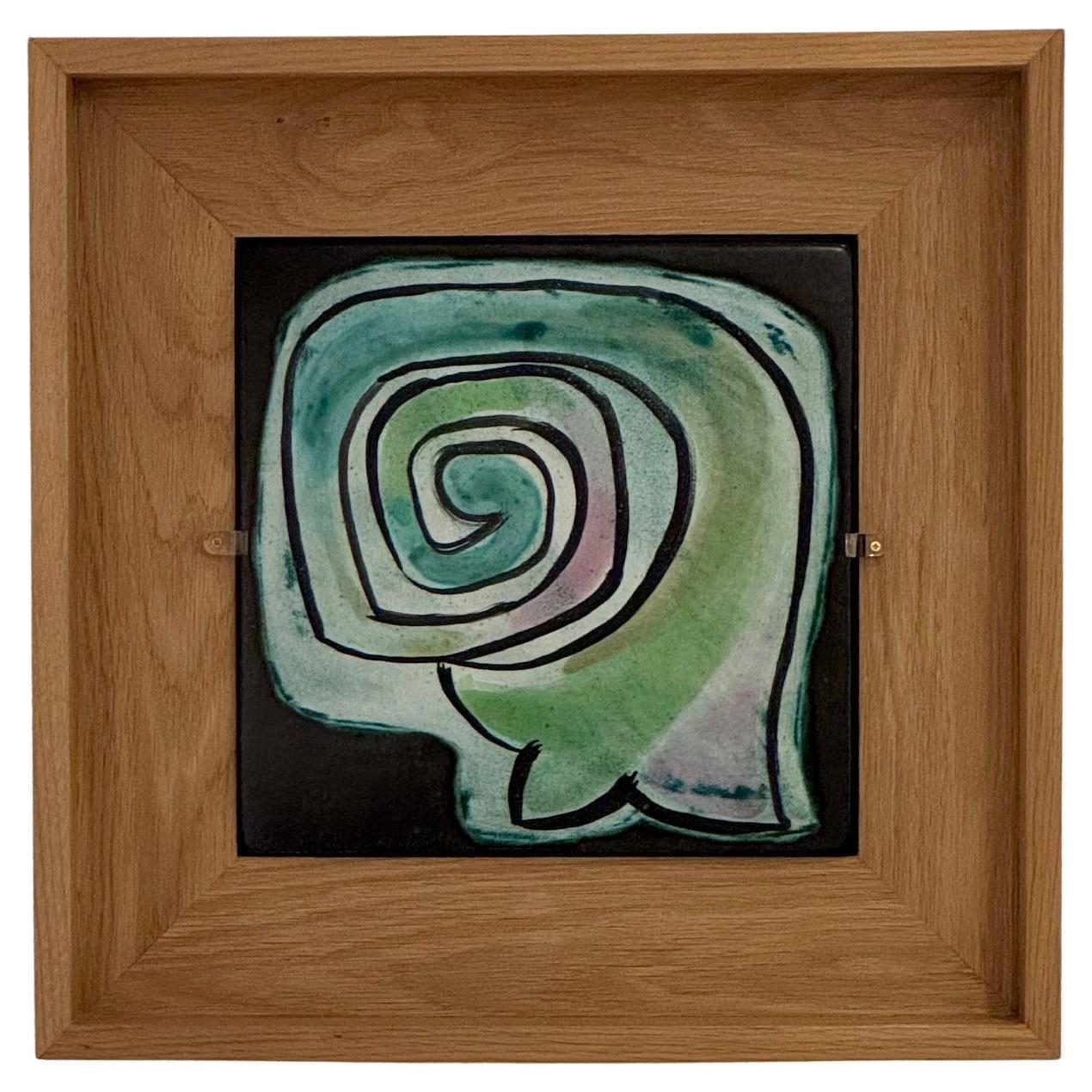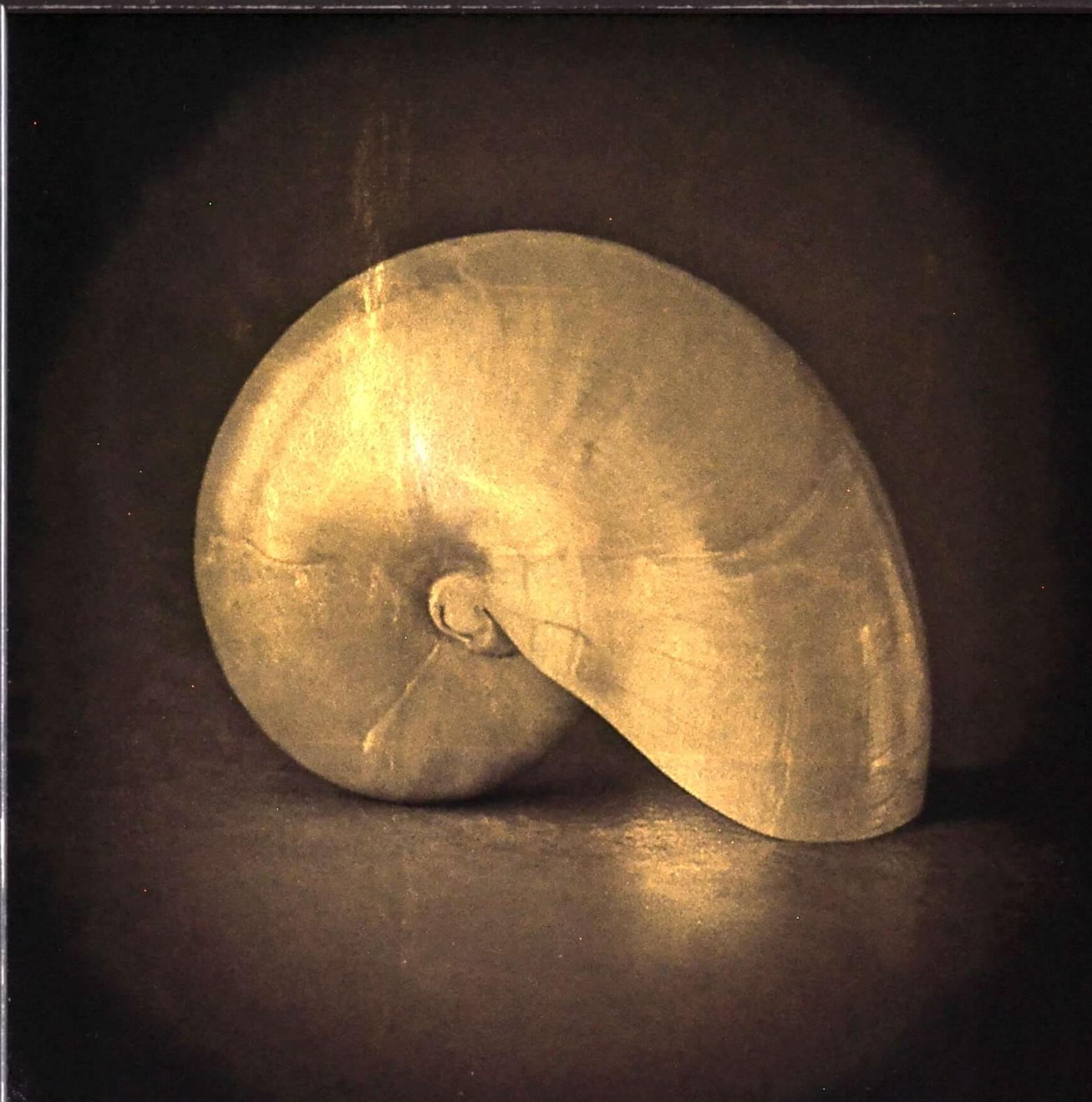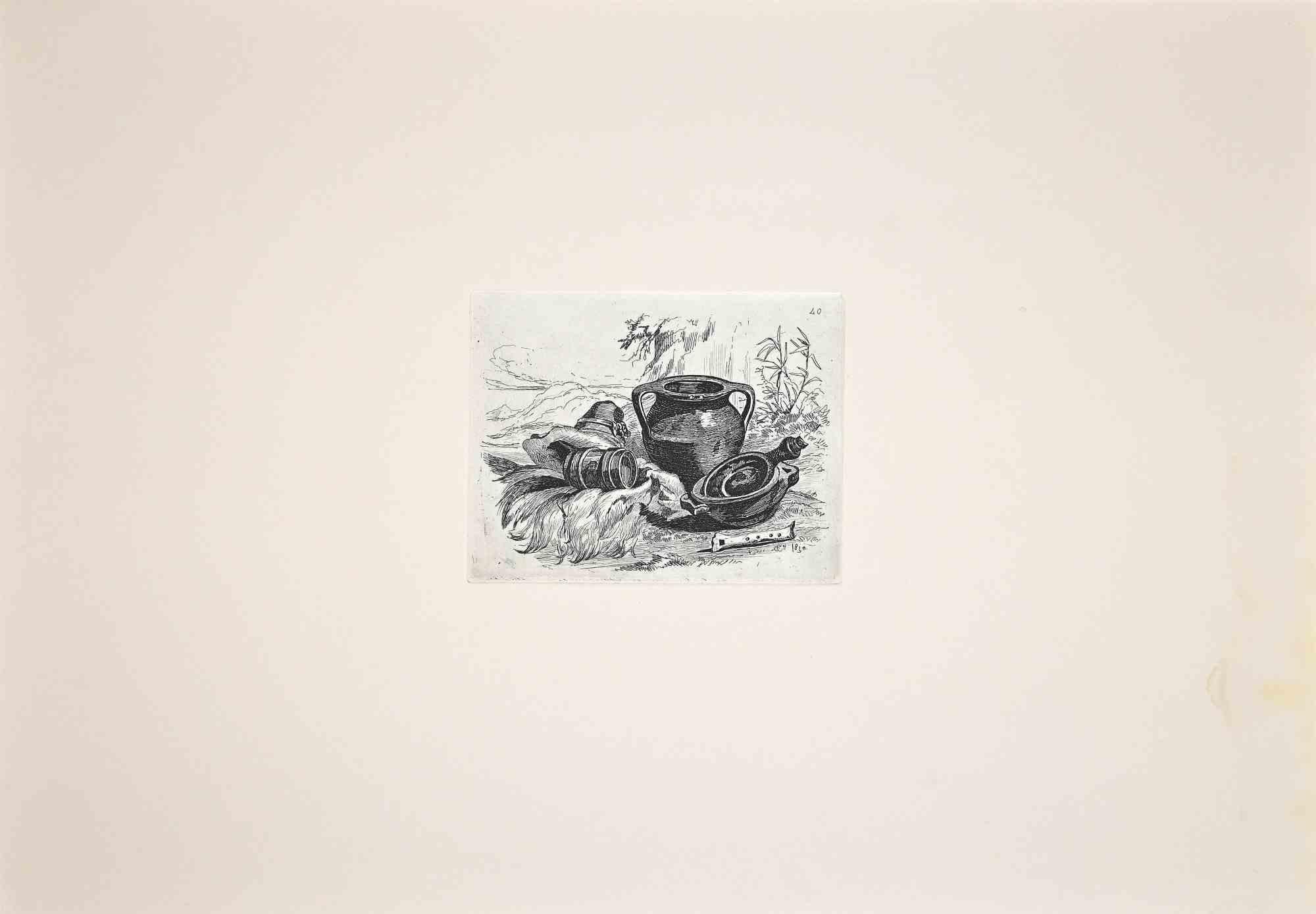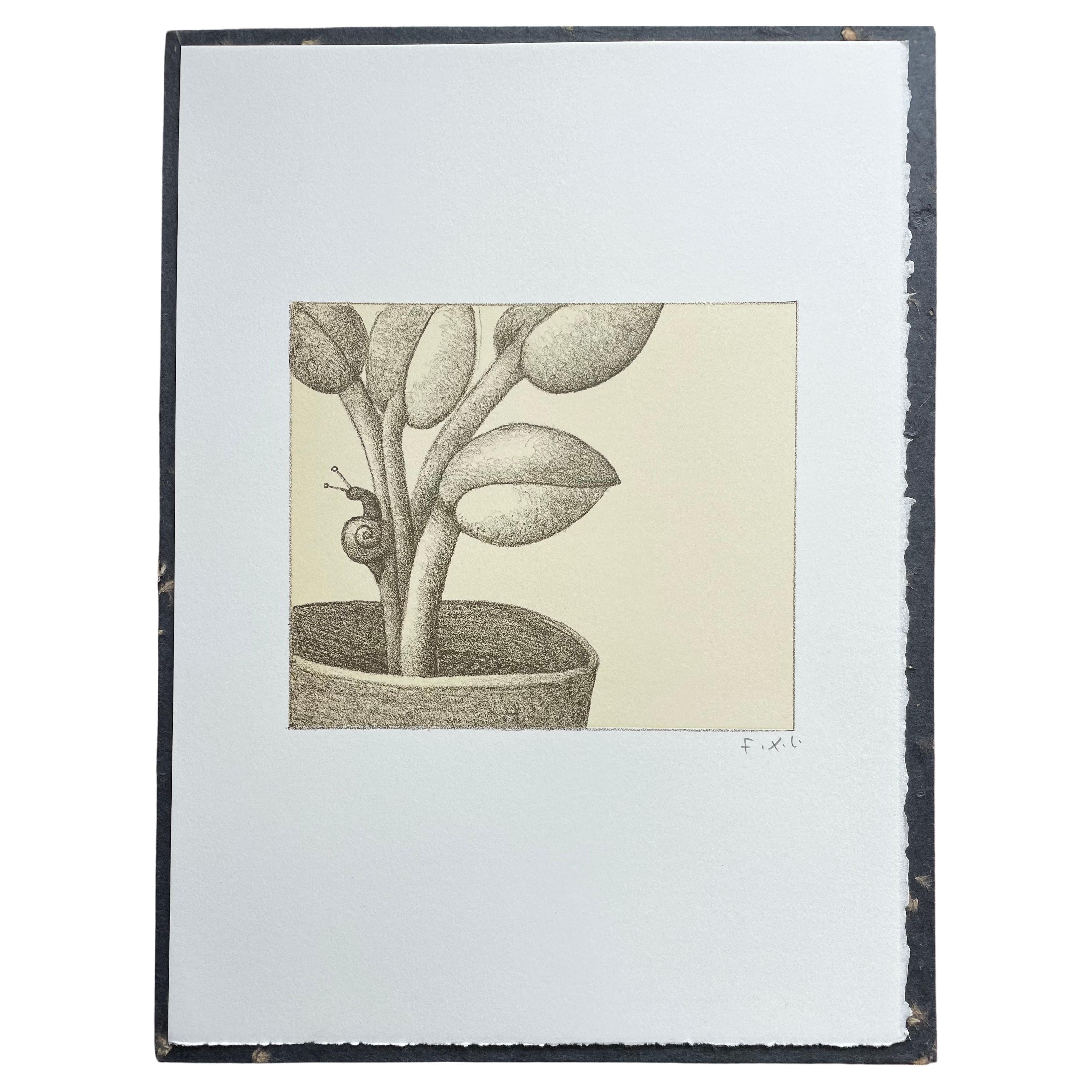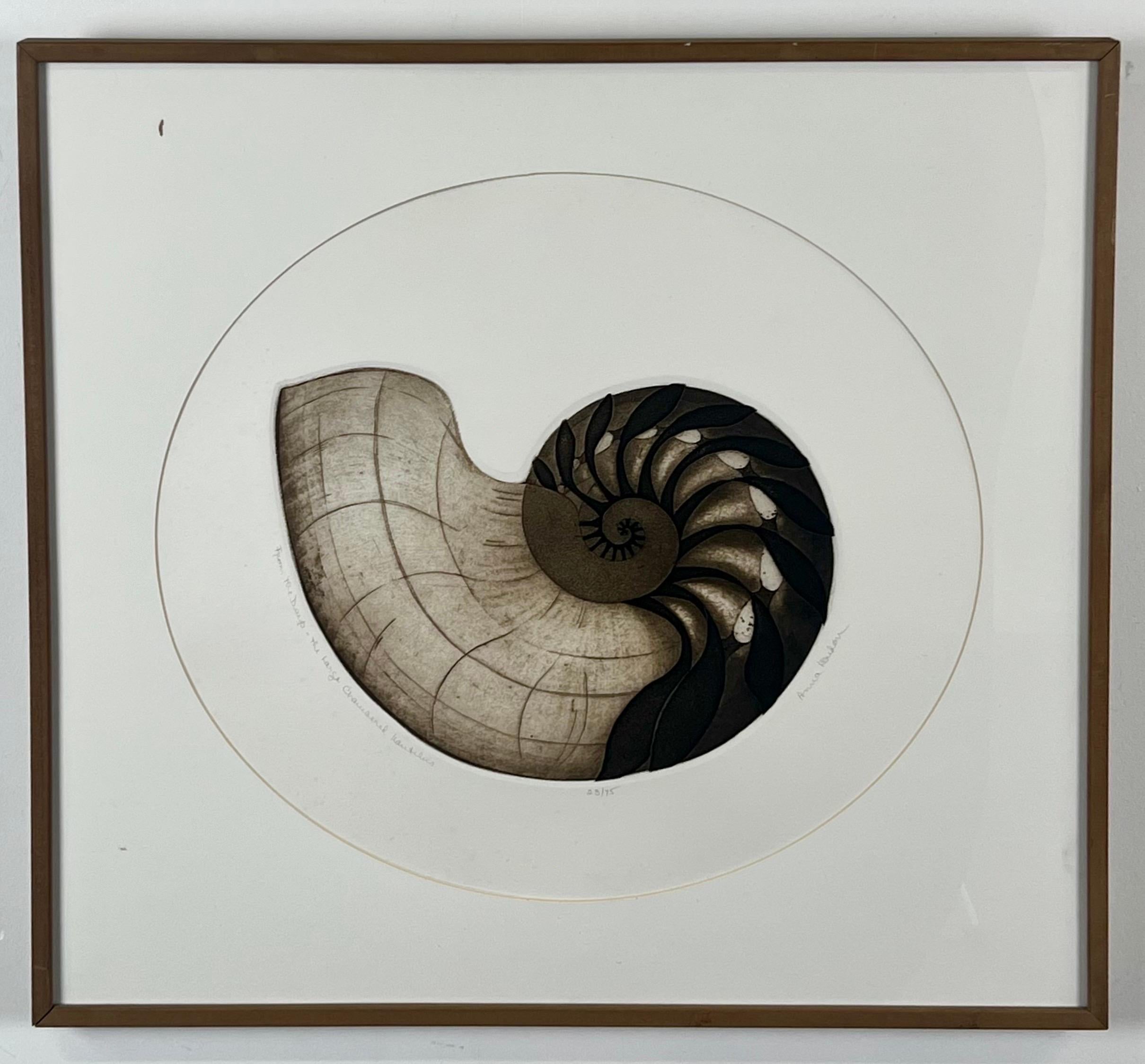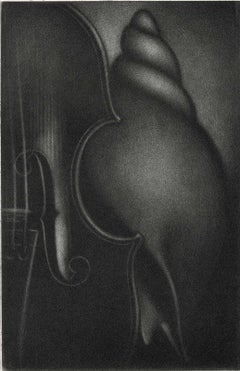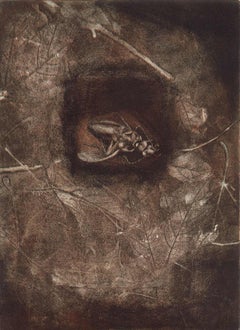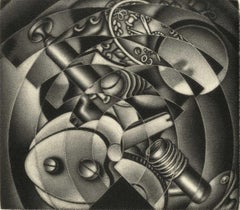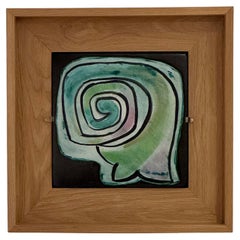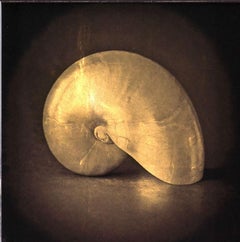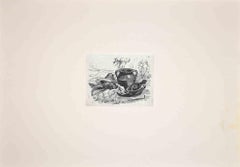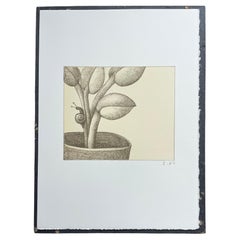Items Similar to Snail in a Bowl (Artist Proof inscribed to Fritz Eichenberg)
Want more images or videos?
Request additional images or videos from the seller
1 of 5
Leonard MerchantSnail in a Bowl (Artist Proof inscribed to Fritz Eichenberg)
$138.75
$18525% Off
£105.75
£14125% Off
€120.88
€161.1725% Off
CA$195.21
CA$260.2825% Off
A$213.85
A$285.1325% Off
CHF 112.56
CHF 150.0825% Off
MX$2,552.35
MX$3,403.1325% Off
NOK 1,434.88
NOK 1,913.1725% Off
SEK 1,311.70
SEK 1,748.9325% Off
DKK 902.94
DKK 1,203.9225% Off
About the Item
Leonard Merchant's mezzotint, "Snail in Cup" is inscribed for fellow artist, Fritz Eichenberg.
While a student at the Central School for Arts and Crafts in London, a young Leonard Marchant found an engraving rocker in a cupboard and proceeded to turn himself into a master of the painstaking art of mezzotinting.
Marchant, who has died in Shrewsbury aged 70, grew up in Simonstown, the Royal Navy's enclave in South Africa. Though his first job was as a parliamentary messenger, he taught himself to paint and, aged 19, was given a one-man show in Cape Town. Fired by this success, he left for England to study painting and, he claimed, to escape the stifling home atmosphere created by his Catholic mother and aunts. (His father was killed in the second world war.) Without contacts in London, he phoned Jacob Epstein, whose recommendation resulted in a grant to study briefly at the Central School. It was later, when studying full-time at the Central, that he saw the mezzotints of the Japanese master, Yozo Hamaguchi, in a London gallery. He was hooked.
Creating a mezzotint is tedious in the extreme. The copper plate must first be prepared with a "rocker" which roughens the surface. A plate may be "rocked" 30 or 40 times. The rough texture is then reduced with a burnisher and a scraper, allowing the print a range of tones from velvety black through the greys to white. Marchant's plates could be months in the making. But the technical demands were the least of his worries. In its 18th- and 19th-century heyday, mezzotint was solely a reproductive medium, for copying masters such as Reynolds and Turner. The development of photography rendered it unfashionable, and by the 1960s the technique, known as la manière anglaise, was a bygone medium.
Marchant, by now a teacher in printmaking at the Central, began to create original mezzotints with a colleague, Radavan Kraguly. A perfectionist, he seemed to revel in the straitjacket procedure. Perhaps it was the metaphor of bringing darkness out of light that appealed to this straight-talking, sometimes sombre, man, who would suddenly relax and light up like a gleaming hue on one of his prints. His work was of squares and triangles with the occasional cat, black and ominous, and carefully arranged still lifes, featuring plants, a seed pod, a pot he might have bought at auction to celebrate the sale of a print.
There were one-man shows, notably at the Bankside Gallery. He sold well at the Royal Academy summer exhibition, was a Florence Biennale prizewinner, spent a fellowship year at the British School in Rome, and was elected a Fellow of the Royal Society of Painter-Printmakers.
But making mezzotints was not a paying job. Marchant and his South African wife, Tess, lived grandly in houses they could barely afford. Quercus, their shop in Primrose Hill, London, sold oak furniture in the 60s, before it was fashionable. When Marchant needed to renew stocks, he found he had priced himself out of the market.
Professor David Carpanini of the Royal Society of Printmakers says a mezzotinter has to be very sure of what he wants to do. "Marchant's work was very sensitive in being able to see the model in areas of tone, which is the fundamental ability of the skilled mezzotinter. He had extraordinary poetic insight."
Despite its revival, mezzotinting has a long way to go. It is not a favoured offering in art schools and dealers may also consider it "gloomy", though Marchant later printed in strong reds and brighter colors. A heavy smoker, Marchant contracted emphysema, but carried on rocking the plates till it became too much for him. He was an accomplished painter and, in his final year, was able to snatch a few hours a day to finish several large canvasses, including a much-cherished portrait of himself and his children.
About the Seller
4.9
Recognized Seller
These prestigious sellers are industry leaders and represent the highest echelon for item quality and design.
Platinum Seller
Premium sellers with a 4.7+ rating and 24-hour response times
Established in 1988
1stDibs seller since 2018
809 sales on 1stDibs
Typical response time: 5 hours
Associations
International Fine Print Dealers Association
- ShippingRetrieving quote...Shipping from: New Orleans, LA
- Return Policy
More From This Seller
View AllViolin et Coquille (violin and shell / inscribed Happy New Year 2000)
By Laurent Schkolnyk
Located in New Orleans, LA
This black and white mezzotint of a shell next to a violin is an artist proof that was inscribed Happy New Year 2000 and signed by the artist. The regular e...
Category
1990s American Modern Still-life Prints
Materials
Mezzotint
Crushed Beetle / Fragile Series
By Lois Ward
Located in New Orleans, LA
Lois Ward created a Fragile Series of images including "Crushed Beetle" in 1990 in a very small edition of just 9. This impression is #1 of 9.
Ward has always been concerned with t...
Category
1990s American Modern Animal Prints
Materials
Mezzotint
$112 Sale Price
25% Off
Sewing Circles
By Carol Wax
Located in New Orleans, LA
A play on words provides the title for this image -- a circle created out of the deconstructed parts of Singer IV This image is #37 from an edition of only 50, referenced as Firos 78...
Category
1990s American Modern Still-life Prints
Materials
Mezzotint
Singer IV (part of a typewriter that is iconic)
By Carol Wax
Located in New Orleans, LA
Carol Wax's mezzotint, Singer IV looking at the botton of the typewriter portrays the incised metal of the machine. It was issued as an edition of 75 and this impression is #22. FIR...
Category
1990s Contemporary Portrait Prints
Materials
Mezzotint
$225 Sale Price
25% Off
Singer 10101
By Carol Wax
Located in New Orleans, LA
Carol Wax's mezzotint, "Singer 10101", is an image of Singer I as seen through a drafting template. It was issued as an edition of 40 and was printed at the Indiana University print...
Category
Early 2000s Contemporary Still-life Prints
Materials
Mezzotint
$187 Sale Price
25% Off
Une Fois Rien (Once Again / No Action)
By Christine Ravaux
Located in New Orleans, LA
Christine Ravaux created Une Fois Rien which is signed by pencil. This impression is #12 of 30
Shades of blacks and grays on a fallen branch create a pleasing pattern contrasted wi...
Category
Early 2000s Modern Landscape Prints
Materials
Mezzotint
$150 Sale Price
25% Off
You May Also Like
Georges Jouve "Snail form" Ceramic Plate, 1950s
By Georges Jouve
Located in Paris, FR
Georges Jouve (1910-1964)
Decorative Ceramic plate "Snail form or free form " 1950's
Signed JOUVE on back (engraved)
New Oak frame
Ceramic Measures : 25 cm x 25 cm. (Framed 41 x 41 cm)
Category
Vintage 1950s Ceramics
Materials
Ceramic
"Nautilus Shell" Original Artwork, 24kt Gold on Museum Glass
By Kate Breakey
Located in Denver, CO
About the artist:
Kate Breakey is internationally known for her large-scale, richly hand-colored photographs
including her acclaimed series of luminous portraits of birds, flowers a...
Category
2010s Photorealist Still-life Paintings
Materials
Gold Leaf
The Still Life - Etching After Charles Coleman - 1992
Located in Roma, IT
The still life is an original etching artwork realized after Charles Coleman (1807, Yorkshire - 1874, Roma) in 1992.
Signed on the plate, the rare edition of only 25 copies.
Good c...
Category
1990s Modern Figurative Prints
Materials
Etching
Francois-Xavier Lalanne (1927-2008) The snail, 2002
By François-Xavier Lalanne
Located in Saint ouen, FR
Francois-Xavier Lalanne (1927-2008) The snail, 2002
lithograph hand signed in pencil by François Xavier Lalanne, in perfect condition
This lithograph by François Xavier Lalanne dep...
Category
Early 2000s French Prints
Materials
Paper
Nautilus Shell Untitled Limited Edition Print by Anna Loudon, Framed & Numbered
Located in Plainview, NY
Anna Loudon (American, 20th Century)
Untitled (Nautilus Shell), signed and numbered 23/75
This striking limited-edition print by Anna Loudon explores the timeless beauty of natural ...
Category
20th Century Naturalistic More Prints
Materials
Color
Stoneware Bowl (Small Sepia Toned Still Life Photograph of White Ceramic Bowl)
By David Halliday
Located in Hudson, NY
Vintage style still life photograph of antique white bowl, framed
Sepia toned silver gelatin print, vintage uneditioned print
Custom black stained wood molding with visible grain
8-...
Category
1990s Modern Still-life Photography
Materials
Silver Gelatin
